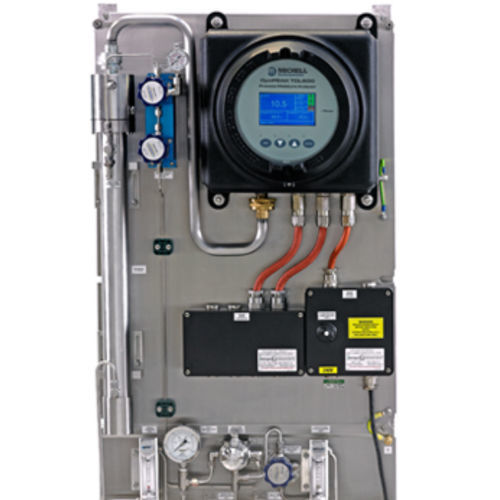
#Industry News
Moisture Measurement for Hydrogen and Natural Gas Blending
Michell Instruments: supporting the roll-out of net zero technologies
If the UK is to meet its net zero target by 2050, dramatic changes need to take place in the way in which we produce and use energy, especially natural gas. 85 % of our homes and businesses are dependent on gas for heating. In 2017, the average household produced around 2.7 tonnes of carbon emissions; to hit the 2050 target, this figure has to fall to just 138 kg, according to data from the Energy Systems Catapult.
The challenge is to meet this goal as efficiently and cost-effectively as possible. Clearly, renewables have an important role to play but so too does the transition from natural gas to a nationwide supply that will eventually be based on a combination of bio-methane and hydrogen.
This process is already well-advanced. A pilot project in a closed gas network at Keele University in Staffordshire is using a 20 % blend of hydrogen and natural gas, while a further hydrogen blending trial taking place at Winlaton, Gateshead is tapping into a public gas network. Similar exercises are taking place in other countries around the world.
The Energy Networks Association (ENA) now expects that the national gas grid will be ready for distribution companies to begin the widespread use of hydrogen injection into natural gas from 2023. Over time, the objective is to introduce biomethane. To this end, the ENA recently launched an ambitious Gas Goes Green initiative, bringing together the UK’s gas network companies to convert the nation’s 284,000 km of pipeline infrastructure to run on a blend of hydrogen and biomethane without affecting consumers’ heating, hot water or cooking equipment.
The challenges to this transition are technical, commercial and political. The ENA is calling for the UK government to be more ambitious in its target for low-carbon hydrogen generation, recommending that the goal of 5 GW is doubled by 2030. Further issues include the ability to generate sufficient hydrogen sustainably to meet demand, while concerns exist over potential risks of hydrogen embrittlement in older iron and steel pipework, and the need to adapt pipeline pressures to compensate for the different levels of energy density between hydrogen and natural gas.
Nonetheless, once these challenges have been overcome there is the potential that a 20 % hydrogen/natural gas blend will save, in the UK alone, around 6 million tonnes of carbon dioxide emissions every year – the equivalent of taking 2.5 million cars off the road.





